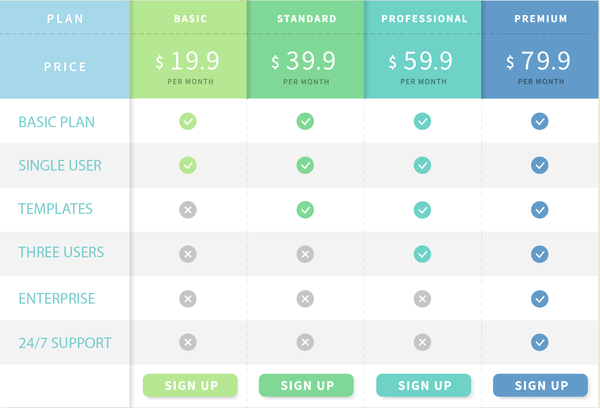Understanding Conjoint Analysis: A Deep Dive into Market Research
By analyzing how customers value different features, you can optimize your product according to what’s most attractive to them.
Inside this Article…
You might also like…
Why AI Tools Built by Researchers Make a Difference
Learn more about AI-powered market research tools and why tools build by researchers for researchers are leading the charge. By: Erik Larson Date:...
Customer Survey Best Practices: Unlocking Insights Through Your Customer List
Learn how to leverage customer lists for market research. Explore best practices, address low response rates, and drive actionable insights. Date:...
Introduction
“Listen up, people, we’re in for a good time, let me tell you! Now, I won’t be tossing around dry phrases like ‘statistical technique’ or ‘experimental designs’. Nope! Instead, we’re going to take a walk on the wild side of marketing research techniques. Yes, you read it right, the wild side! And our path? Conjoint Analysis. Let’s go conjointly into the jungle of market research and conjoint surveys.
.

Understanding What Conjoint Analysis Is and How It Works
Picture this: You’ve got a new mobile phone to sell. It has various features, including a brilliant camera, it’s also got 8 GB of RAM, a sleek design, and a 5000 mAh battery to keep it going. But, wait a minute! Is that the perfect combination? Should you perhaps push for a 6000 mAh battery instead? Would customers prefer a bigger screen? These are burning questions, aren’t they?
Enter conjoint analysis, a powerful marketing research technique that can help decode the customer’s mindset. It’s a type of product analysis that lets you understand what combination of a discrete number of product attributes is most influential on respondent choice or decision making. By analyzing how customers value different features, you can optimize your product according to what’s most attractive to them.
Conjoint analysis treats a product as a set of attributes and determines the relative importance that individuals place on these attributes. These are then quantified as ‘partworth utilities,’ essentially the worth or value of each attribute part. Fun, isn’t it? It’s like creating a salad with just the right amount of tomatoes, lettuce, and onions according to each person’s preference. And let’s not forget the dressing – the price! Oh, the price elasticity in this business!

Understanding Conjoint Analysis Types and Their Application
As a tool, conjoint analysis isn’t a one-size-fits-all affair. It comes in various forms, like traditional conjoint analysis, adaptive conjoint analysis, and choice-based conjoint analysis. Each type of conjoint analysis has a unique way of gathering and interpreting quality data. Let’s dissect each, shall we?
Traditional conjoint analysis
This method, the granddaddy of the lot, requires respondents to rank or rate different sets of attributes. Although this model was revolutionary in its time (big thanks to Duncan Luce and John Tukey), it tends to be time-consuming and complex. Imagine rating twenty different smartphones based on a dozen features. Too much work, right?
Adaptive conjoint analysis
This is where new adaptive method which uses a different approach, steps in. Instead of having respondents rank or rate all attribute combinations, it uses a clever software (you might have heard about Sawtooth Software) to adapt the survey to the respondent’s initial answers. It simplifies the conjoint task and makes the process more engaging, creating a better experience for the respondent.
Choice-based conjoint analysis
Choice-based, or discrete choice analysis, is a bit more realistic. Here, respondents are presented with choice sets or scenarios where they have to pick one option or ‘product’. This mimics real-life buying decisions and provides robust data for market simulation models.
The Use of Conjoint Analysis in Market Prediction and Shares
Conjoint analysis isn’t just a fancy way to understand what customers want in a smartphone. It’s also about anticipating the market shares of new features or products. By using conjoint studies, businesses can simulate how changes in product attributes might impact their market share.
Sounds like magic, doesn’t it? But it’s all mathematics, statistics, and a bit of psychological understanding. A technique called ‘hierarchical Bayes analysis’ is often used to calculate individual-level utilities from survey data, which is then used to project market preferences.

The Art of Conjoint Surveys and Data Collection
For conjoint analysis to be successful, the devil lies in the detail – or should we say, the quality of data collected. This is where conjoint surveys come into the spotlight.
A good conjoint survey is designed around two principles. First, it must accurately represent the type of product or service being studied. In our smartphone example, this could mean having attributes related to memory size, screen size, camera quality, battery life, and of course, price.
Second, it must reflect realistic scenarios that consumers encounter when making buying decisions. This can be achieved by carefully crafting choice sets. The choice sets are important because they influence the statistical power and validity of the study.
The Practical Application of Conjoint Analysis
Picture this: You’ve got your conjoint survey results, and you’re staring at piles of data – a ton of different features and a whole lot of numbers about what customers prefer. It might seem intimidating, but remember, this is not just data – this is a treasure map.
For example, you discover that your customers value a longer battery life (6000 mAh battery, anyone?) over a better camera. Or maybe they prefer lower prices over the latest technology. This is gold! It’s these insights that enable you to make critical decisions about your product. It could shape the way you advertise, how you price your product, or even guide the development of new features.
With conjoint analysis, you have the tools to tailor your product or service according to what customers value most. It’s like being given a cheat sheet for an exam – it won’t write the answers for you, but it sure can guide you in the right direction.

Conclusion
In conclusion, conjoint analysis, whether traditional, adaptive, or choice-based, is a valuable tool in any marketer’s toolbox. By understanding what customers value in a product, you’re in a better position to offer them exactly what they want. So, the next time you’re faced with a decision about product attributes or market shares, remember – conjoint analysis is your friend. With this tool in hand, you’re in for a good time, indeed!”
Looking to Optimize Products or Services in 2023?
Let OvationMR help you reach your business goals
Follow
OvationMR

Need help with new insights?
We are ready to offer you:



